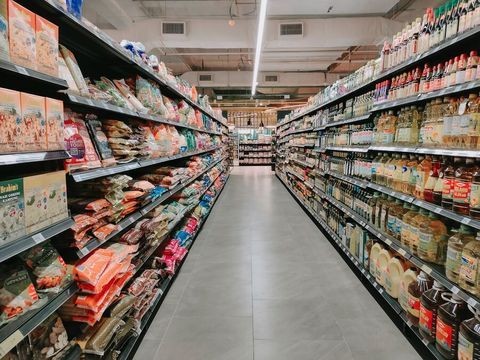Crumb Rubber in the Crosshairs: Focus on Artificial Turf Increases
Client Alert | 4 min read | 04.04.16
Many universities, academies, sports teams, secondary schools, and local governments have installed synthetic turf made with “crumb rubber” – ground-up tires – on playing fields and playgrounds in recent years to obtain the advantages of all-season use and lower maintenance costs. In recent months, however, the media and a growing group of critics contend that the crumb rubber used in these fields contains carcinogens and is potentially dangerous to users. The scientific evidence to date shows no basis for these concerns, but the movement against crumb rubber is nevertheless escalating, due in large part to media reports from NBC, ESPN, and others, as demonstrated by the following recent events:
- In mid-January 2016, a California state senator introduced a bill to impose regulations on the installation of crumb rubber playing surfaces and encouraged schools and municipalities in California to consider surfaces made of alternative, organic material. The bill ultimately died 3-2 in a Senate panel vote, despite support from several well-known celebrities, including Jennifer Beals, Laura Dern, Sheryl Crow, Ted Danson, and Courtney Cox.
- One week later, on January 21, 2016, two top Democrats on the Senate Commerce Committee asked President Obama to initiate a comprehensive federal-led study into the potential health risks posed by the surfaces. In a letter to the president, U.S. Sens. Bill Nelson (D-Fla.) and Richard Blumenthal (D-Conn.) said that the possible correlation between crumb rubber and cancer suggested by recent media reports warrants further scrutiny. In addition, the senators cited research from University of Washington soccer coach Amy Griffin, who has cataloged reports of over 150 cancer cases involving athletes who spent significant periods of time playing on crumb rubber turf (primarily as soccer goalies).
- Three weeks later, on February 12, 2016, The Environmental Protection Agency, the Centers for Disease Control, and the Consumer Product Safety Commission announced an "action plan" to address questions raised about crumb rubber turf and possible risks for young athletes. The multi-agency plan includes reaching out to athletes, parents, and industry representatives to collect input before issuing a report by year’s end.
- On February 18, 2016, the Agency for Toxic Substances and Disease Registry (ATSDR), published a Federal Register notice announcing two upcoming crumb rubber studies: an investigation of selected fields across the U.S. (over 50 to start with) to characterize the use of crumb rubber and to take samples, followed by an “activity” study focused on how people use the fields and how they would potentially be exposed. ATSDR also proposed a third study of exposure monitoring, including monitors placed on soccer players and other athletes. Colleges, universities, and other schools will undoubtedly be targets for all three studies.
The crumb rubber debate has not escaped colleges, universities, and state agencies in California. In 2009, the Los Angeles Unified School District announced its intent to switch to non-recycled infills for all new field installations. And according to a recent article on crumb rubber in the L.A. Times, when an 11-acre recreation field at UCLA had to be replaced, the school wrestled with published concerns about crumb rubber: "We had to stop and have a thorough discussion" (Rich Mylin, UCLA Director of Recreation Venues).
Despite the lack of sound science linking crumb rubber to adverse health effects, the crumb rubber issue is not going away any time soon. Indeed, colleges, universities, and other schools who have crumb rubber fields are likely to be disproportionately affected if tort litigation brought by exposed student athletes takes off. Our recent Law360 article surveys the crumb rubber debate, the current science and existing health investigations of crumb rubber, and the litigation risks arising from ongoing investigations and media pressure.
Other Articles in This Month's Edition:
- Knocking Out Class Actions After Campbell-Ewald: Can Defendants Still Control Their Destiny?
- Health Canada Announces First Penalty Under CCPSA
- EU Launches Online Dispute Resolution (ODR) Portal for Consumers
- Court Denies Michaels’ Motion to Dismiss CPSC Penalty Enforcement Action and Finds that Failure to Report is a Continuing Violation
- European Commission Launches Review of EU Consumer Legislation
- Advertisers in the Ring – A Roundup of Recent Competitor Advertising Challenges: Enough Tailored Support for Direct Comparisons and Health Benefits?
Insights
Client Alert | 4 min read | 12.04.25
District Court Grants Preliminary Injunction Against Seller of Gray Market Snack Food Products
On November 12, 2025, Judge King in the U.S. District Court for the Western District of Washington granted in part Haldiram India Ltd.’s (“Plaintiff” or “Haldiram”) motion for a preliminary injunction against Punjab Trading, Inc. (“Defendant” or “Punjab Trading”), a seller alleged to be importing and distributing gray market snack food products not authorized for sale in the United States. The court found that Haldiram was likely to succeed on the merits of its trademark infringement claim because the products at issue, which were intended for sale in India, were materially different from the versions intended for sale in the U.S., and for this reason were not genuine products when sold in the U.S. Although the court narrowed certain overbroad provisions in the requested order, it ultimately enjoined Punjab Trading from importing, selling, or assisting others in selling the non-genuine Haldiram products in the U.S. market.
Client Alert | 21 min read | 12.04.25
Highlights: CMS’s Proposed Rule for Medicare Part C & D (CY 2027 NPRM)
Client Alert | 11 min read | 12.01.25


